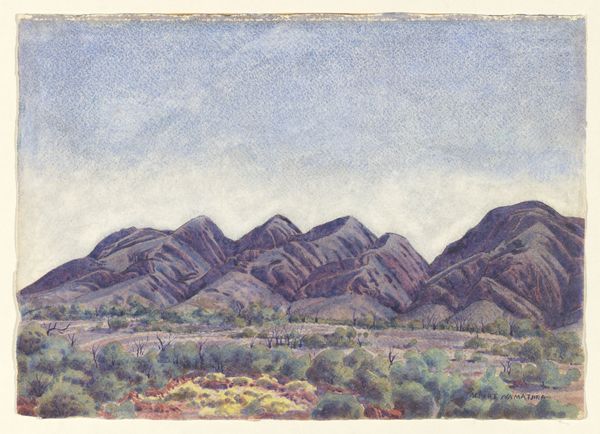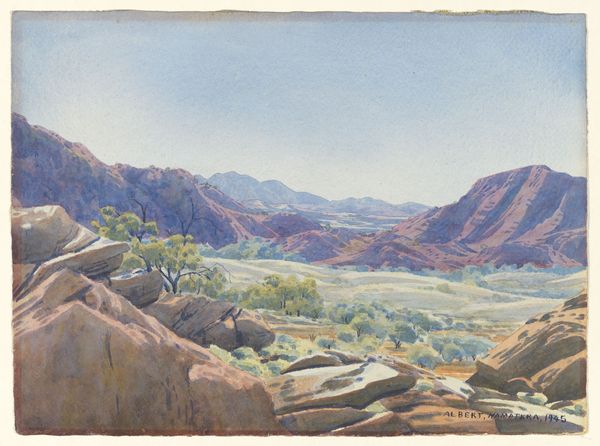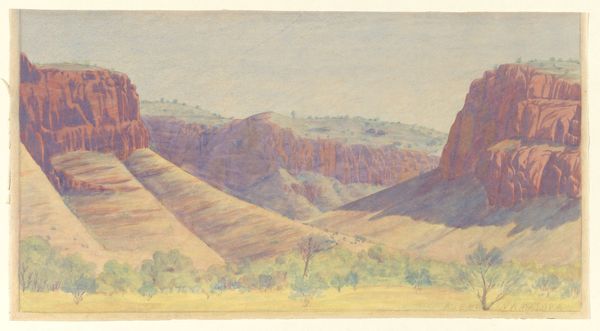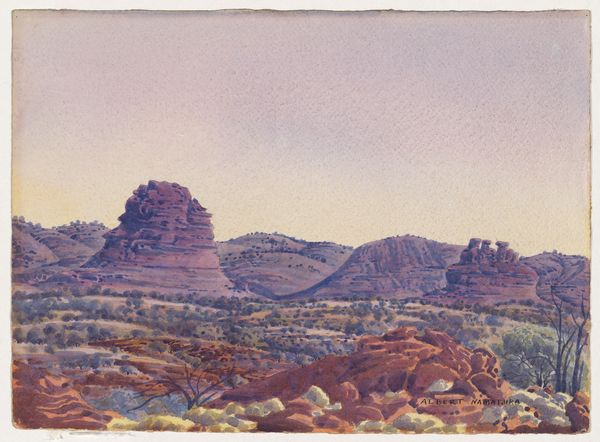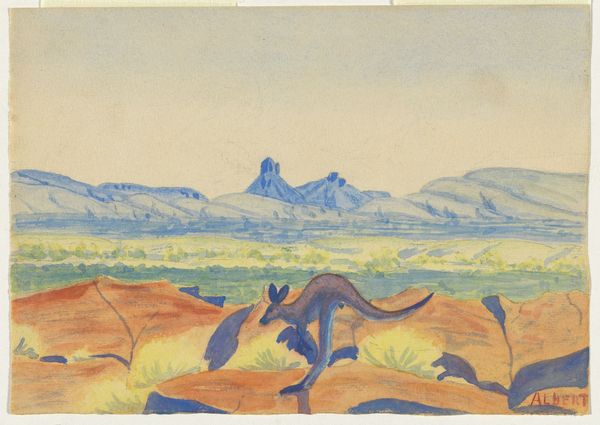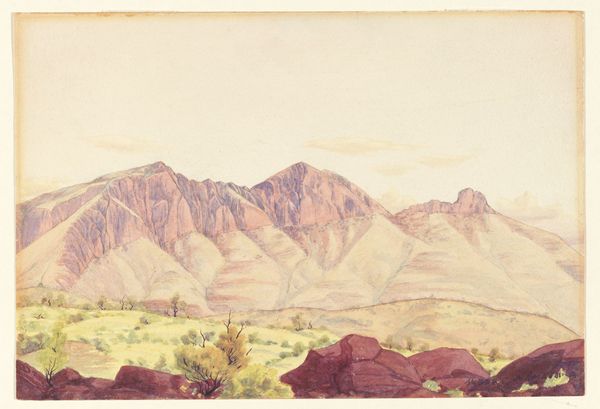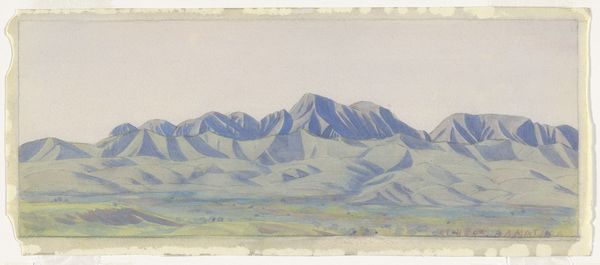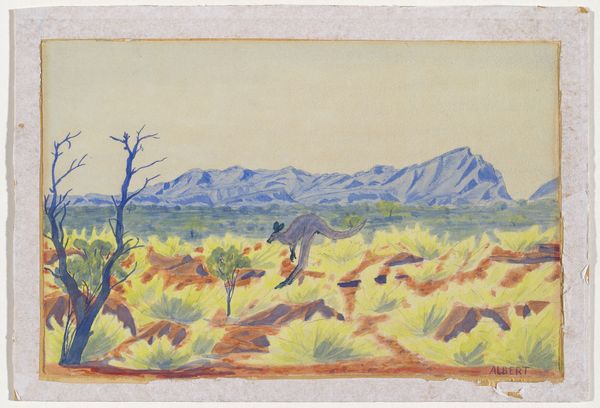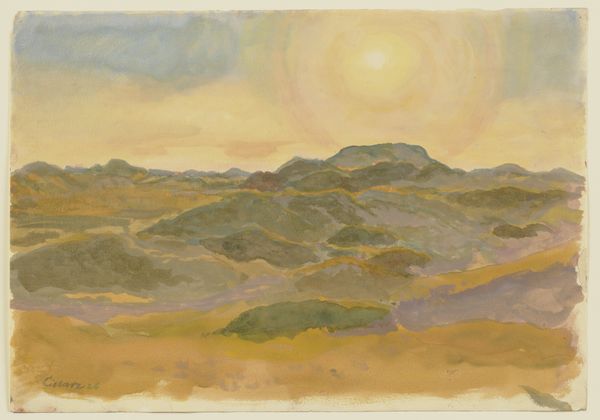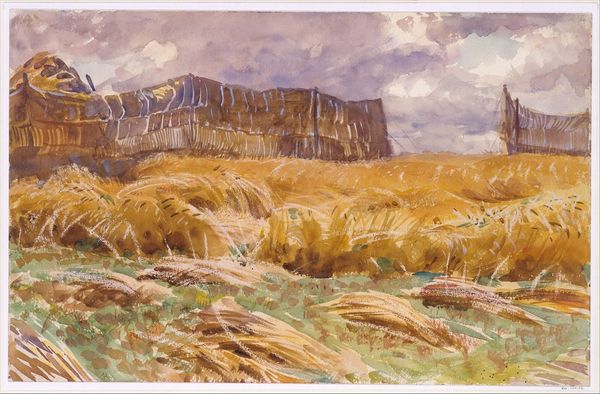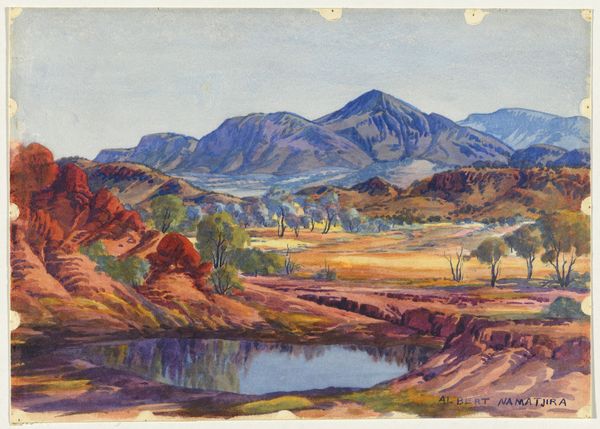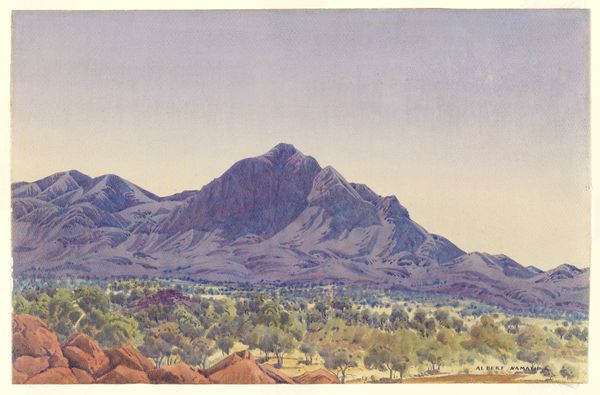
plein-air, watercolor
#
water colours
#
plein-air
#
landscape
#
watercolor
#
coloured pencil
#
watercolor
Copyright: Albert Namatjira,Fair Use
Curator: Albert Namatjira created this watercolor painting, “Sunset in Ormiston Gorge,” in 1939, rendering a section of the Australian outback in serene tones. Editor: My first impression is one of gentle heat—the sky seems to radiate warmth down onto the rugged landscape. There's a visual stillness to the composition, a moment captured. Curator: That’s beautifully put. The light itself becomes the subject, but the social context here is also compelling. Namatjira became renowned for painting in a Western style that appealed to European sensibilities, yet his work also carved out a unique place for Indigenous art within the Australian landscape tradition. Editor: And what do you make of the recurring motif of these towering monoliths that appear to frame and give a feeling of depth and monumentality to the whole work, contrasted with the more intimate detail and brushstrokes of the foreground grasses? It reminds me of the way cultures connect themselves to the ancient myths through the medium of these striking, unforgettable images. Curator: Indeed, those formations act as enduring symbols, laden with narrative for those who read that cultural history. But also consider the circumstances under which these works were being produced and collected. The selective appreciation of this style reinforced certain colonial power structures even as it acknowledged talent. Namatjira's watercolours gave settlers and institutions ways of seeing the landscape and relating to it which conveniently circumvented land rights issues and reinforced certain hierarchies of knowledge. Editor: Do you suppose, even unconsciously, Namatjira's composition might also convey a deeper message, an acknowledgement and celebration of belonging, and that his paintings invite the viewer to form part of it, whilst also providing an allegorical reminder of what had to be sacrificed by his native ancestors. The composition may hold this tension, offering an interpretation that suggests reverence. Curator: The tension you identified seems embedded in both the imagery and the market it entered. The narrative is far from resolved and there are still issues with copyright surrounding Namatjira's artistic legacy which still require active correction. Editor: Art holds up a mirror to us, reflecting the good and the challenging within cultures; I hope our dialogue sheds some light on this piece as an enduring artifact of human aspiration and a record of the complexities which history has etched on our cultural symbols. Curator: I couldn’t agree more. Art enables a powerful means of looking at history. Hopefully we are now all better prepared to see.
Comments
No comments
Be the first to comment and join the conversation on the ultimate creative platform.
